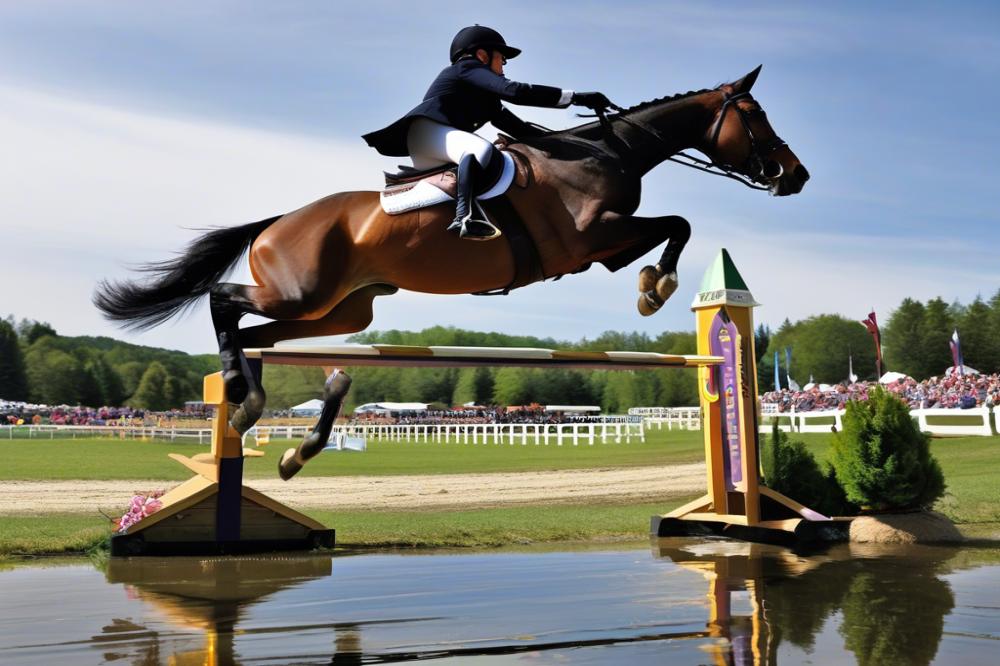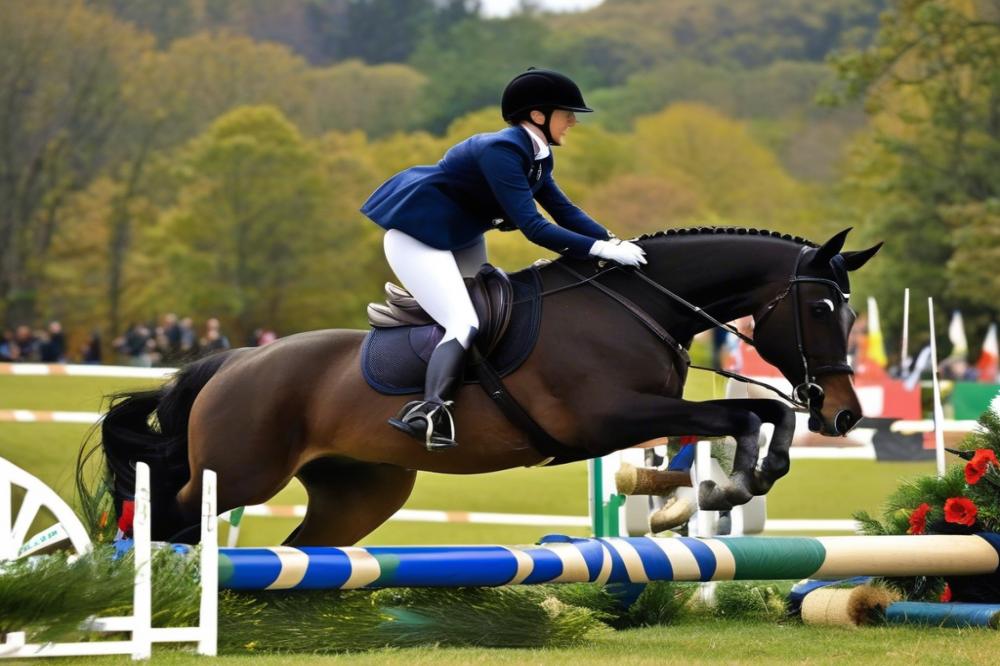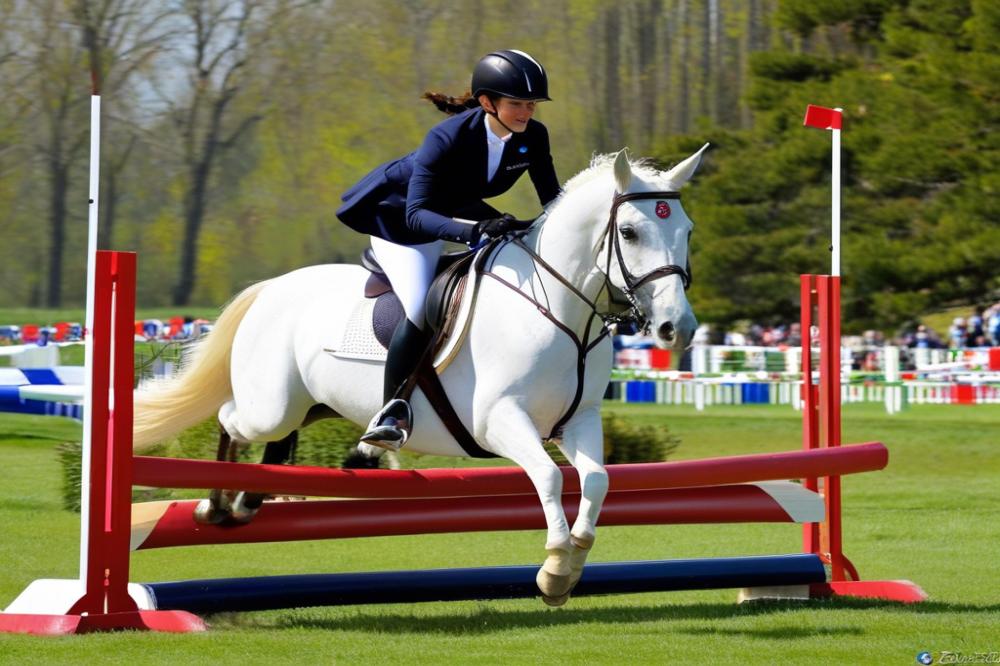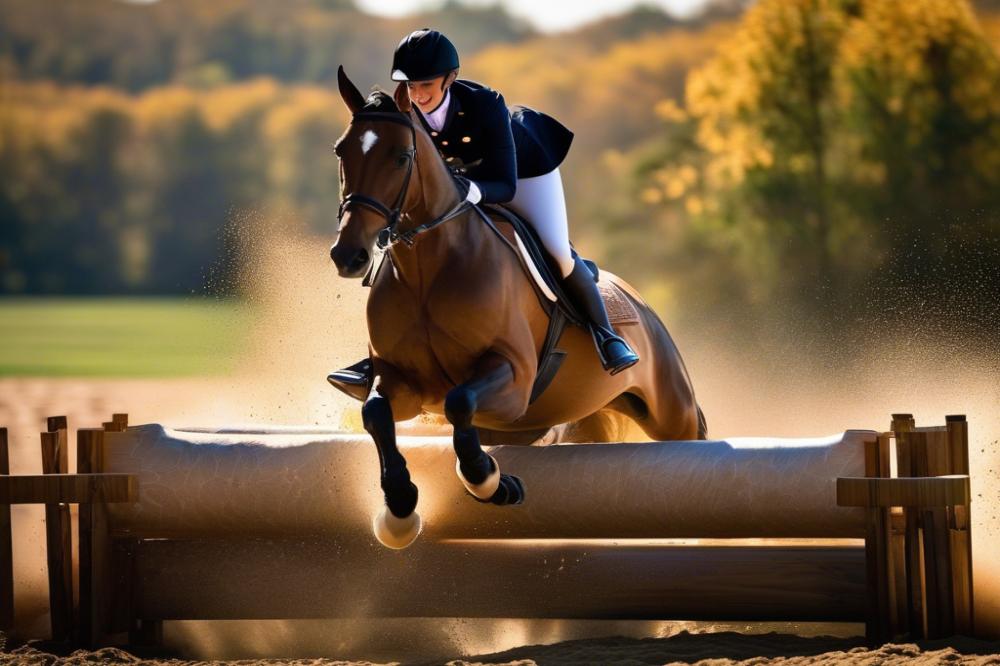The Key to Riding a Warmblood for Cross-Country Events
Warmbloods play a significant role in the world of eventing. They are known for their strength, agility, and calm temperaments. Riders choose these horses for cross-country events because they can handle challenging terrains and obstacles with grace and power. Many competitors see them as the ideal partner for their adventurous spirit and athletic abilities.
Understanding horse riding techniques is crucial for anyone participating in Cross-Country Riding. Mastery of these techniques not only enhances performance but also encourages a strong bond between horse and rider. Having the right skill set can help maintain safety and improve outcomes during events. Therefore, focusing on riding fundamentals is essential.
In equestrian sports, the variety of horse breeds contributes to a rider’s experience. While many breeds compete, Warmbloods stand out for their versatility. They can excel in multiple disciplines, including dressage and show jumping, beyond just eventing. This adaptability makes them a valuable choice for riders aiming for success in the competitive environment.
Understanding Warmbloods

Characteristics of Warmbloods
Warmbloods are known for their impressive builds and athleticism. These horses typically have a strong, muscular physique, which makes them stand out in various competitions. They often possess a harmonious combination of speed and power. With longer strides, they can cover ground with ease. Additionally, they often have a calm demeanor while possessing undeniable elegance. This mix of traits makes them popular among riders looking for dependable partners in various equestrian disciplines.
Their Suitability for Jumping and Cross-Country Events
When it comes to jumping, these horses excel. Their build provides the strength required to clear obstacles with confidence. Warmbloods can navigate the intricate designs of cross-country courses thanks to their agility. They adapt well to uneven terrains, which is essential during challenging rides. Riders appreciate how these equines can maintain balance while tackling both jumps and varied landscapes. Each horse handles fences with grace, displaying skills that many seek in their mounts.
Temperament and Trainability in Horse Training
Temperament plays a crucial role in training. Most of these horses exhibit a calm and willing nature. Many respond positively to gentle cues, making training sessions more enjoyable for riders. Patience tends to yield great results as they build trust with their trainers. Their trainability often allows for a quicker understanding of commands. This means that even riders with less experience can effectively handle their training. Communication is key, and building a bond is essential for success out on the course.
Rider Position and Technique

Maintaining a balanced rider position is vital in cross-country events. A stable seat helps the horse move freely and confidently. Riders should sit deep in the saddle, keeping their weight distributed evenly. This balance supports effective communication with the animal.
Proper techniques can foster a strong connection between rider and horse. Using light rein contact is essential for conveying messages without confusion. Subtle movements can signal to the horse when to accelerate or slow down. Timing these cues properly makes a significant difference during competition.
Body alignment is crucial when approaching jumps and obstacles. Shoulders should remain relaxed and slightly back to promote an upright posture. Legs should hang naturally, keeping the heels down for better stability. Gaining confidence in this position allows for smoother transitions over hurdles.
As the rider prepares to take a leap, creating a strong base of support is important. Leaning slightly forward while maintaining a straight line from shoulder to heel helps in achieving this. Eyes should focus on the landing spot rather than the obstacle itself. This technique can help prevent unwanted surprises mid-jump.
It’s also beneficial to stay aware of one’s center of gravity. When navigating tricky turns or uneven terrain, adjusting the body can affect momentum. Keeping the chin up promotes better visibility, which aids in anticipating upcoming challenges. A responsive rider yields a more willing horse.
Fitness and Endurance Training

Fitness is vital for both horse and rider in cross-country events. A fit horse performs better and has a lower risk of injury. Riders also need to be in shape to maintain control and stability. Balancing endurance and strength can make a big difference. Whether you’re a seasoned competitor or a novice, understanding these elements is key.
Warmblood horses possess a powerful build, making proper training essential. Create a fitness plan that caters to their strengths and weaknesses. This breed may need more cardiovascular work to enhance stamina. Different exercises can target various muscle groups. For instance, hill work helps build strength, while longer rides improve overall endurance. Mixing activities keeps training interesting for both horse and rider.
Endurance Training Techniques to Enhance Performance
Focus on gradual increases in workout intensity. Start with shorter sessions and gradually extend their duration. This method allows your horse to adjust without becoming overwhelmed. Incorporating interval training can also be effective. Alternate fast bursts with slower recovery periods. This technique helps to build up stamina while keeping the training dynamic.
Rider fitness shouldn’t be overlooked. Practicing exercises that develop core strength is crucial. Sit-ups and planks can improve stability in the saddle. Incorporate running or cycling to enhance cardiovascular fitness. After all, a rider who is physically prepared will have greater control during challenging jumps.
A well-rounded approach will lead to better results. Regularly monitor the horse’s condition. Look for signs of fatigue or discomfort. Adjust the training program as needed. Both horse and rider should enjoy their time together while improving. This not only strengthens their bond but also positively impacts performance in competitions.
Jumping and Navigating Obstacles
Strategies for Successful Jumping
Riding a Warmblood in cross-country requires a solid approach to jumping. Start by establishing a good canter. A balanced pace allows the horse to feel confident as they approach each jump. Use your leg to encourage them forward. Keep your hands steady while giving them enough room to jump comfortably. In turn, this clarity in signals builds trust. Always focus on maintaining rhythm. The quality of the jump often reflects the flow leading up to it.
Training Methods for Tackling Cross-Country Obstacles
Practicing on varied terrain will help train for obstacles. Mixing up training by including small drops, ditches, and logs can be beneficial. Focus on introducing new challenges gradually. Allow the horse time to adjust to each new obstacle. Incorporating pole work can also enhance coordination and agility. When setting up training sessions, create a series of jumps that mimic cross-country events. This exposure helps the horse learn to navigate efficiently.
Building Confidence for Various Challenges
Building a strong bond with the horse improves confidence. Spend time on groundwork to foster trust between horse and rider. Positive reinforcement can encourage them to face new challenges. Use praise and gentle encouragement to reward good performances. Start with smaller obstacles and slowly increase the difficulty. Celebrate small successes to create a sense of achievement. With patience, the horse will develop a willingness to tackle diverse challenges. This journey strengthens the partnership and creates a capable competitor.
Horse Care and Management
Essential Care Routines
Daily routines are crucial for any horse. Grooming should happen regularly to maintain coat health and check for injuries. Regular hoof care is vital as well. A farrier should be scheduled every six to eight weeks to trim and check for signs of infection. Bathing can be done as needed, especially after a day of training or competition.
Another important aspect is the vaccinations and health checks. Wellness evaluations should take place at least once a year. Keep track of all vaccinations and deworming schedules. This record helps to monitor health over time. Fresh bedding in stalls contributes to comfort and cleanliness. Remember, a clean living area is essential for preventing illness.
Nutrition and Conditioning
Nutrition plays a significant role in preparing horses for events. A balanced diet should consist of hay, grains, and supplements suited to their needs. Pay attention to the horse’s weight and adjust feed accordingly. High-quality forage is important for digestive health. The caloric intake needs to match their exercise routine.
To improve fitness, a conditioning program is essential. Start with slow, steady work and gradually increase intensity. Include a mix of work types, like riding, lunging, and trail rides. This approach helps build strength and stamina over time. Hill work can be beneficial for building muscle. Ensure to incorporate rest days to help recovery.
Mental Well-Being
A horse’s mental state can greatly affect performance. Stress or anxiety can hinder a horse’s ability to focus and perform. Regular interaction with their handler helps in building trust. Spend time bonding through grooming, petting, or even just talking to them.
Exposure to different environments is vital. Take the horse on outings to new places to build confidence. Consistent training and familiar routines can also reduce anxiety. Recognizing signs of stress, such as changes in behavior or eating habits, is important. Address these issues quickly to keep the horse calm and focused.
Performance in Cross-Country Events
Preparing for Competition Day
On competition day, having a clear plan is vital. A rider must check all gear, ensuring everything is in place. Warm-up exercises play a big role in getting both horse and rider ready. Stretching the horse’s muscles helps prevent injuries during the event. Arriving early allows time to assess the course. Riders should walk the course to understand the challenges ahead. Knowing where the jumps are, and their distances, is crucial. Visualizing each jump can also help calm nerves.
Analyzing Performance and Seeking Improvement
After the event, reflection is key. Riders should watch videos of their rounds to spot areas needing change. Identifying mistakes is essential for growth. A rider might notice they approached a jump too quickly or didn’t use aids effectively. Documenting performance can help track progress over time. Lessons learned can shape future practices. Regular feedback from coaches also aids improvement. Constructive criticism is a tool to elevate skills.
The Role of Teamwork Between Horse and Rider
Collaboration between horse and rider is the heart of cross-country events. Understanding each other’s strengths makes a difference. Effective communication is essential. Riders must use their body language to signal intentions while on course. Trust builds through consistent practice and positive experiences. A strong bond means the horse feels confident tackling obstacles. When there is harmony, performances tend to be smoother. Both horse and rider share the spotlight, relying on one another.
Wrapping It Up
Recap the essential points made throughout this guide. Riding a Warmblood for cross-country events demands a blend of skill, understanding, and trust. Developing a solid partnership with the horse is crucial. Communication between horse and rider must be clear to navigate the diverse course elements. Balance is key when approaching jumps, and always maintaining a steady pace can make a significant difference. Furthermore, knowing the horse’s capabilities will aid in making smart decisions on the course.
Ongoing learning and practice should be part of any equestrian journey. Take lessons whenever possible. Attending clinics can broaden your knowledge and skills. Observing experienced riders can also provide valuable insights. Never stop seeking ways to improve your technique. A commitment to progress will enhance your performance and deepen your bond with your horse.
The relationship between horse and rider evolves over time. With patience and trust, a strong connection can flourish. This unique partnership is what makes eventing truly special. Cherishing each moment spent together can enrich both the rider’s and horse’s experiences. Enjoy the ride, celebrate the victories, and learn from the challenges. Embrace the adventure, for it is this journey that defines the heart of equestrian sports.



